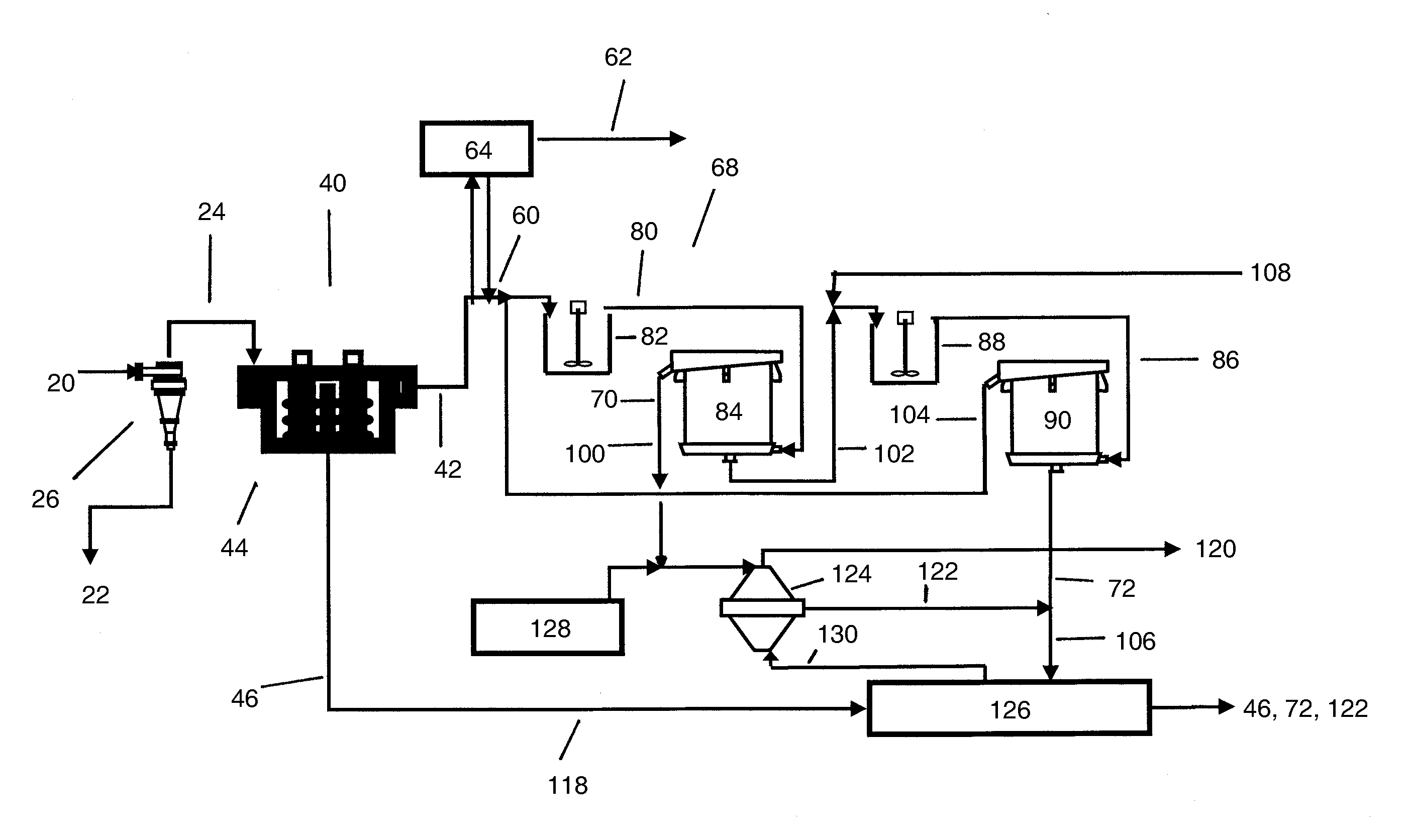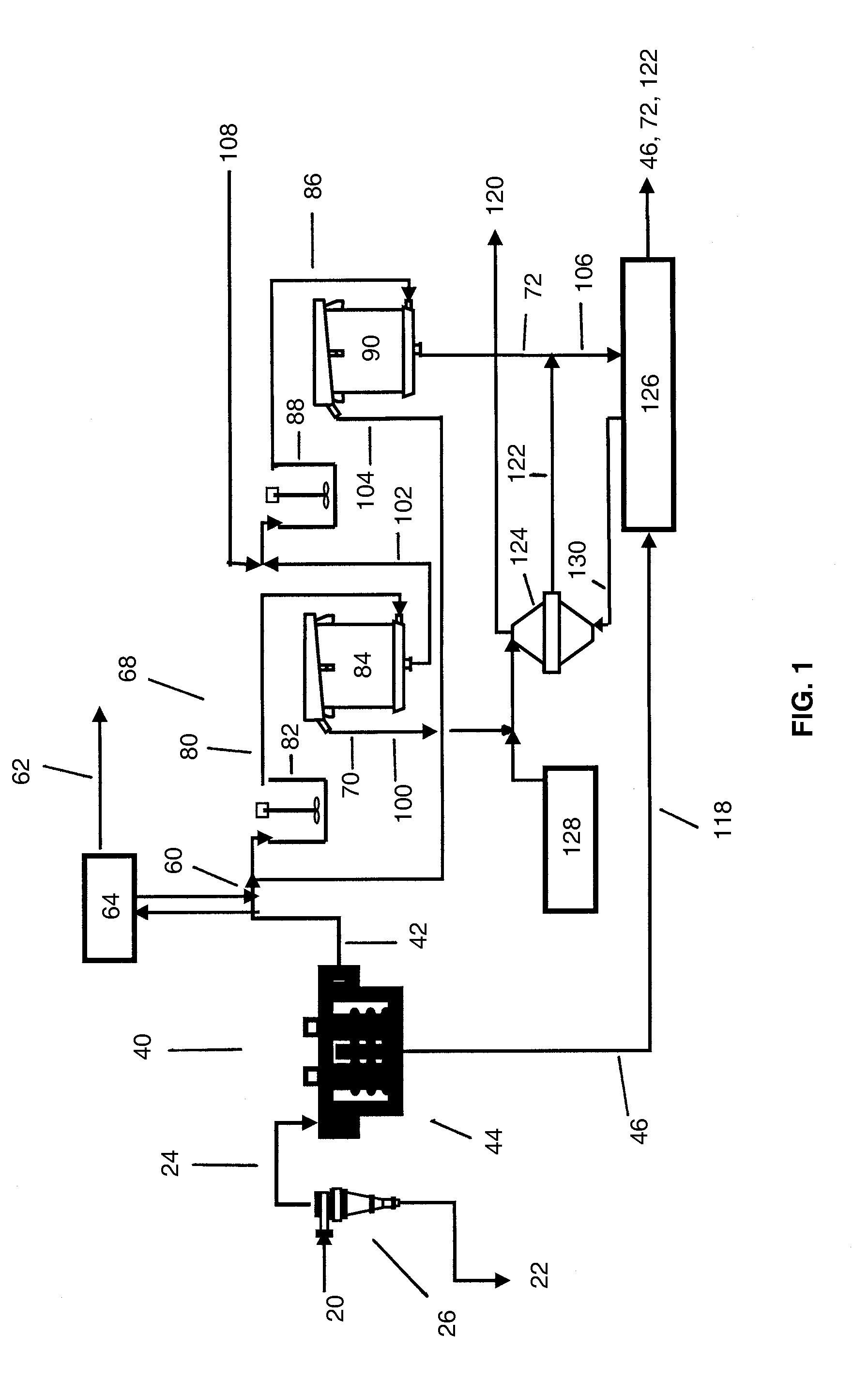Recovery of bitumen from froth treatment tailings
a technology of froth treatment tailings and bitumen, which is applied in the direction of liquid hydrocarbon mixture production, petroleum industry, solid separation, etc., can solve the problem that a significant amount of bitumen from the original oil sand ore is typically lost to the froth treatment tailings, and achieves the effect of enhancing water separation
- Summary
- Abstract
- Description
- Claims
- Application Information
AI Technical Summary
Benefits of technology
Problems solved by technology
Method used
Image
Examples
Embodiment Construction
[0108]The present invention is a method for recovering bitumen (i.e., tailings bitumen) from froth treatment tailings.
[0109]The froth treatment tailings result from a process for recovering bitumen from oil sand. The process for recovering bitumen from oil sand is comprised of producing a bitumen froth from the oil sand and is further comprised of separating the froth treatment tailings from the bitumen froth in a froth treatment process.
[0110]The process for recovering bitumen from oil sand may be comprised of any water based oil sand extraction process which is capable of producing the bitumen froth. Separating the froth treatment tailings from the bitumen froth may be comprised of any suitable froth treatment process, including without limitation, processes using a froth treatment diluent and gravity settlers and / or enhanced gravity separation apparatus.
[0111]A typical bitumen froth may be comprised of about 60 percent bitumen, about 30 percent water and about 10 percent solid mi...
PUM
| Property | Measurement | Unit |
|---|---|---|
| temperature | aaaaa | aaaaa |
| temperature | aaaaa | aaaaa |
| density | aaaaa | aaaaa |
Abstract
Description
Claims
Application Information
 Login to View More
Login to View More - R&D
- Intellectual Property
- Life Sciences
- Materials
- Tech Scout
- Unparalleled Data Quality
- Higher Quality Content
- 60% Fewer Hallucinations
Browse by: Latest US Patents, China's latest patents, Technical Efficacy Thesaurus, Application Domain, Technology Topic, Popular Technical Reports.
© 2025 PatSnap. All rights reserved.Legal|Privacy policy|Modern Slavery Act Transparency Statement|Sitemap|About US| Contact US: help@patsnap.com



